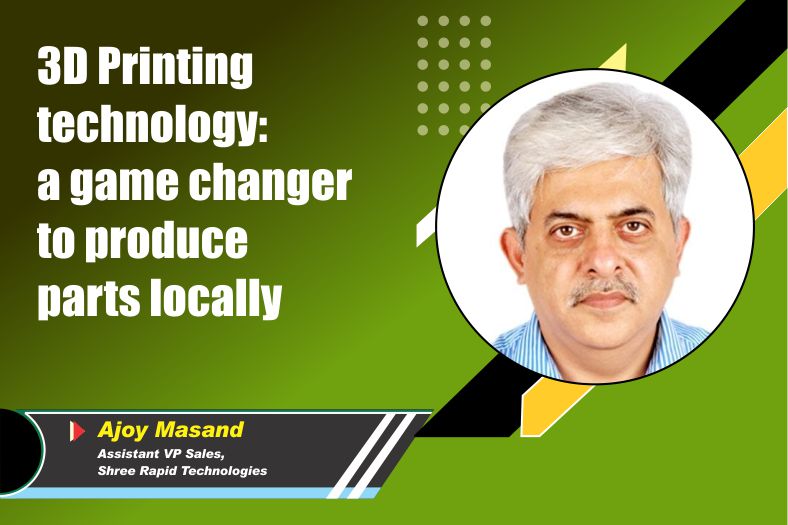3D Printing technology: a game changer to produce parts locally
By OEM Update Editorial April 1, 2022 4:54 pm IST
Innovations promote software processing capabilities combined with finesse in manufacturing high quality machinery.
Die and Mould automated technologies gaining momentum in industry
In view of the emerging shift seen in product manufacturing in India, Die and Mould automated technologies are gaining momentum and growing leaps and bounds. However, geographical barriers existing in view of changing scenarios have provided impetus to more automation.
Impacting development of Die and Mould industry and future prospects
The high growth is due to increase in volume, aiding development of the Die and Mould industry. Furthermore, technological advancements which are not being able to bring in manufacturing high precision products is one of the challenges faced by the industry.
Factors thriving demand for this market and shifting trends
Geographical shift in manufacturing was evident post pandemic and due to restricted movement of goods and people. Also, a shift in the inclining trend for manufacturing industries is visible from China to India. It is seen as a remarkable change, since politically too there were influencing factors to cause a shift in business strategies by American and European companies in favour of India.
New innovations in dies and moulds cater to the automotive sector The automotive sector is undergoing major reforms towards processing capabilities and automation. This encouraged increased use of software processing capabilities combined with finesse in manufacturing high quality machinery. These all are catering to increasing customer demand for high end automotive vehicles.
Innovative technologies taking place to meet arising demands New and innovative technologies are entering the industry in a big way. The trends happening in the industry are encouraging to bring technology to India such as Photogrammetry for scanning of car bodies offered by ZEISS and marketed by SRT.The demand and growth for component increase is also witnessed, with the growing automotive industry. We want to inculcate the practice of quality and quantity production of parts to meet the arising demands from customers.
Challenges in the process of injection moulding With advancing times, it’s high time to go for producing injection moulds. We feel high productivity tooling is still a challenge to produce injection moulds.
Evolution of 3D printing and future demand for injection moulds
With ongoing thrust on 3D Printing Technology and to meet the gap in supply of parts and components, 3D Printing happens to be the game changer as using this technology, the parts can be produced locally. 3D Systems Figure 4 Standalone now has the capability of producing plastic parts. The plastic 3D Printed parts can be used as end use parts in the automotive industry, electric switches, and thermal conductive assemblies used in EV and mechanical car technologies. It has almost replaced the need for manufacturing expensive moulds. Figure 4 Standalone delivers industrial-grade durability at an affordable price and low total cost of operations in a short span of time. The 3D Systems Figure 4 Technology combines 6 sigma repeatability with the industry’s fastest throughput and time to part. Figure 4 Advantages. The main claim to fame for the Figure 4 device is its ability to be automated. The changing preference lies in fact that with digital moulding technology producing 3D printed plastic parts in a tool-less manufacturing process is gaining popularity.
Metrology influences rising adoption of advanced technology
Hand held scanners like T-Scan Hawk or tripod mounted ATOS Q systems from ZEISS have brought measurements more mobility in an open environment with accuracies ranging between 10 to 50 micrometres using the blue light technologies or the triple scan principle. Clubbed with GOM Inspect photogrammetry software, the large parts/ assemblies can be inspected or scanned in a short span of time.
3D metrology for advanced manufacturing
Obviously, metrology influences the rising adoption of advanced technology. Machines such as ZEISS Metrotom used for non-contact measurements and deformity (using X-Ray Technology) can help in a big way in reduction of material and defects. It has the capability of measuring high quality parts within 5 microns in noncontact mode.
Cookie Consent
We use cookies to personalize your experience. By continuing to visit this website you agree to our Terms & Conditions, Privacy Policy and Cookie Policy.
















